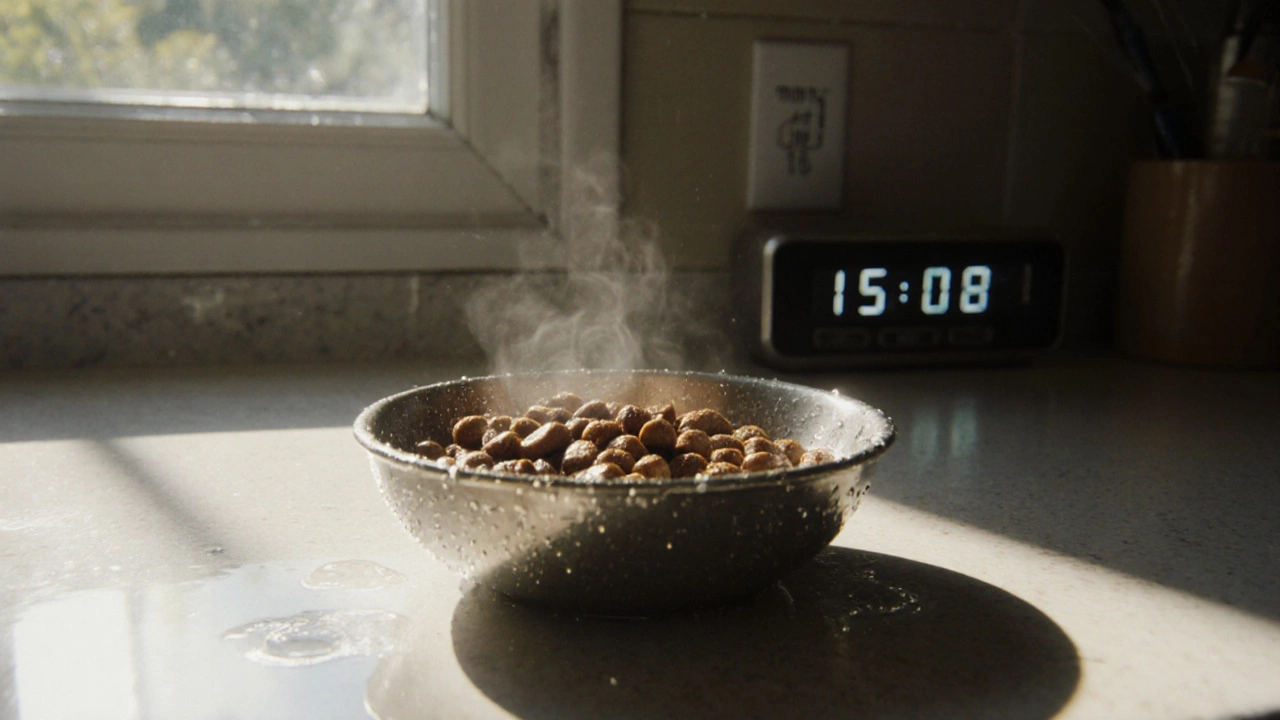Cat Food Storage: Best Ways to Keep Cat Food Fresh and Safe
When you buy cat food, you want it to stay fresh until the last bite. That’s where cat food storage, the practice of keeping feline nutrition protected from air, moisture, and pests. Also known as pet food preservation, it’s not just about convenience—it directly affects your cat’s health and appetite. If your cat’s kibble smells stale or gets soggy, they might turn their nose up at it. And wet food? Left out too long, it can grow bacteria fast. Good storage isn’t optional—it’s basic care.
Most cat owners store dry cat food, pellets or kibble designed for long shelf life in the original bag, but that’s not enough. The bag isn’t airtight. Even a tiny bit of moisture from the air can make the fat go rancid, and that’s bad for your cat’s digestion. The best fix? Transfer it to a plastic or metal airtight container, a sealed bin made specifically for pet food. Look for one with a tight lid, no cracks, and easy-to-clean surfaces. Don’t use glass unless it’s truly sealed—cats can knock it over, and broken glass is dangerous. Keep the container in a cool, dry place, away from sunlight. The pantry works better than the garage. And always keep the original bag inside the container. That way, you still have the expiration date, lot number, and feeding instructions handy.
For wet cat food, canned or pouch food that needs refrigeration after opening, the rules are stricter. Once opened, use it within 2–3 days. Cover the open can with a plastic lid or transfer it to a small sealed container. Never leave wet food out for more than an hour, especially in warm weather. If your cat doesn’t finish it, toss it. Spoiled wet food can cause vomiting or diarrhea. Some owners freeze small portions in ice cube trays for later use—this works if you’re feeding a single cat and plan ahead. Just thaw it in the fridge, never in the microwave.
One big mistake? Mixing old and new food in the same container. Old kibble can harbor mold or bugs you can’t see. Always clean the storage container before refilling it. Wipe it down with vinegar and water, then let it dry completely. Also, never store cat food next to human food or cleaning supplies. Cross-contamination is real, and cats are sensitive to smells. And yes—label your containers. If you have more than one type of food, you’ll thank yourself later.
What about those fancy vacuum-sealed bags or oxygen absorbers? They help, but they’re not necessary for most households. If you go through a 5-lb bag of dry food in under a month, a simple airtight bin is all you need. If you buy in bulk for multiple cats, then yes—consider those extra steps. But don’t overcomplicate it. The goal isn’t perfection—it’s keeping your cat’s food safe, fresh, and appetizing.
You’ll find plenty of tips in the posts below on how to choose the right food, how long it lasts, and what happens when storage goes wrong. Whether you’re dealing with a picky eater, a humid home, or just tired of bugs in the kibble, the solutions are simple. You don’t need expensive gear. Just the right container, a little routine, and a little attention. Your cat will notice the difference.
How Quickly Does Wet Cat Food Spoil? Shelf Life and Safety Tips
Wet cat food spoils quickly-often within 1 to 2 hours at room temperature. Learn how long it lasts in the fridge, how to store it safely, and what to do if your cat eats spoiled food.
